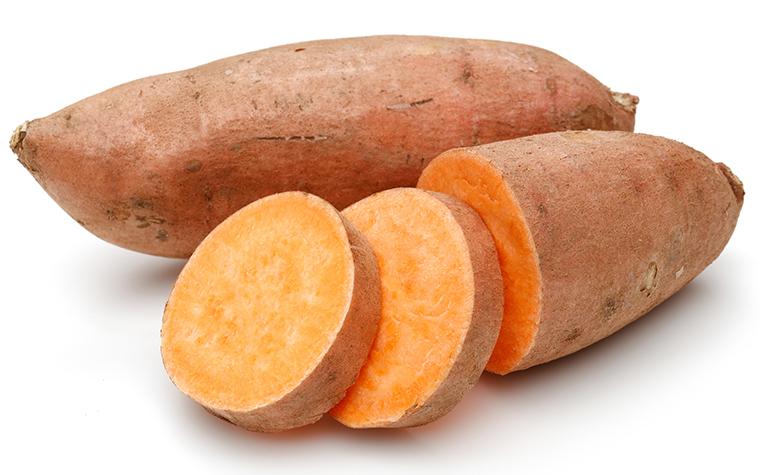Harvest after first light frost for best results.
COLUMBIA, Mo. – The first frost of fall is approaching, and it’s time to think about harvesting your sweet potato crop.
For best results, dig sweet potatoes after the first light frost, said University of Missouri Extension horticulturist David Trinklein. This warm-season root vegetable does not tolerate cold. The table quality of sweet potatoes declines when they are harvested after temperatures drop below 50 F.
Dig the thin-skinned sweet potatoes carefully to avoid bruising, said Trinklein. Gently lift the roots from the soil with a potato fork. Remove soil from the potatoes and let them dry on top of the soil in the sun for a few hours.
Separate injured sweet potatoes from undamaged ones. Injured potatoes ooze a milky liquid. They need time and space to heal cut areas.
Cure sweet potatoes in a warm (80-85 F), humid area for about 10 days. A loose plastic cover over the potatoes creates the desired high relative humidity. Curing produces a higher sugar content and improves the color. It also allows minor wounds to heal. Uncured potatoes lose quality.
Store above freezing temperatures in a basement or unheated garage. Ideal storage temperature is around 55-60 F. Sweet potatoes can be stored 6-10 months. Do not refrigerate.
Sweet potato is thought to be native to tropical South America, said Trinklein. Incans and Mayans used sweet potato as a food source more than 5,000 years ago. Christopher Columbus is credited with introducing it to Europe around 1500.
Sweet potato requires a long growing season, maturing in about 100-110 days. They grow best during long, hot summers. It is versatile, flavorful and nutritious. It is the only vegetable with dual roles as a main course dish and a dessert. Ornamental varieties fill flower planters with their distinctive chartreuse and deep purple foliage.
Trinklein says sweet potato probably deserves more attention in the diet of the average American than it gets, said Trinklein. It is rich in starches and complex carbohydrates for energy and has significant amounts of dietary fiber, beta-carotene and vitamins C and B6. It is as an important source of minerals such as calcium, magnesium and potassium. It also is relatively low in calories: A 100 gram serving has about 115 calories.
Fun facts about sweet potato:
- Sweet potato is a member of the morning glory, or Convolvulaceae, family.
- Sweet potato was first grown in what is now Virginia as early as 1648.
- The world-record sweet potato weighed more than 95 pounds and was grown in Switzerland.
- North Carolina raises the most sweet potatoes, according to the U.S. Department of Agriculture.
- Missouri native George Washington Carver conducted research on sweet potato. He is credited for developing more than 125 diverse products including dyes, wood fillers, candies, pastes, breakfast foods, starches, flours and molasses.
- Yams and sweet potatoes are often confused with one another. Despite a physical similarity, they are not related. Yams are not grown in the United States. The USDA often labels orange, moist-fleshed sweet potatoes as “yams” to distinguish them from the pale, dry-fleshed types.
Learn more about sweet potatoes in the MU Integrated Pest Management article October: Sweet Potato Harvest Time.
The MU Extension publication Growing Sweet Potatoes in Missouri is available for free download.
